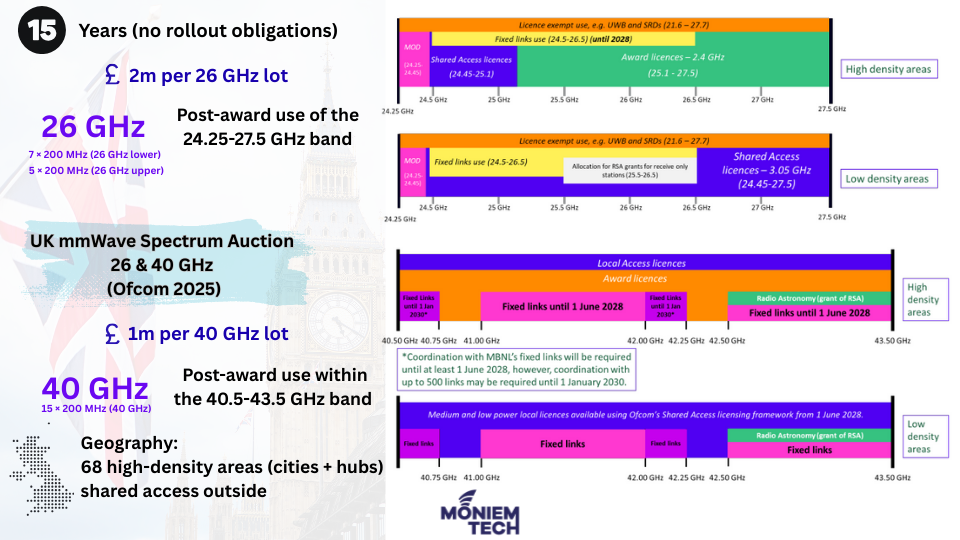Ofcom is auctioning a total of 5.4 GHz of mmWave spectrum across the 26 GHz and 40 GHz bands. This marks a significant milestone for 5G evolution in the UK and the biggest release in UK history.
The mmWave licence framework and auction design have several implications for how 5G and private wireless networks might evolve in the UK — and what kinds of deployment strategies might be viable. Unlike some spectrum auctions, Ofcom has not imposed specific roll-out or coverage obligations or “use it or lose it” build-out targets on these mmWave award licences.
Since existing fixed link operators in 26 GHz have been given notice and may remain in areas until 2028, “coexistence” and interference risk remain until clearance is complete. That uncertainty could slow deployment or require conservative planning.

Coverage model
- The UK is split into 68 High Density Areas (HDAs), and the auction licences apply only within HDAs.
- Outside HDAs (Low Density Areas), spectrum is available via Shared Access licences (first-come, first-served).
Coordination
The award licences require licensees to ensure radio equipment complies with the coordination procedures notified by Ofcom.
While 5G deployment using mmWave remains limited globally, the U.K. is positioning itself as one of the #first markets to allocate it at scale, with risk factors that the device ecosystem is still limited; 26 GHz lower band migration in 2029 adds cost/uncertainty.
